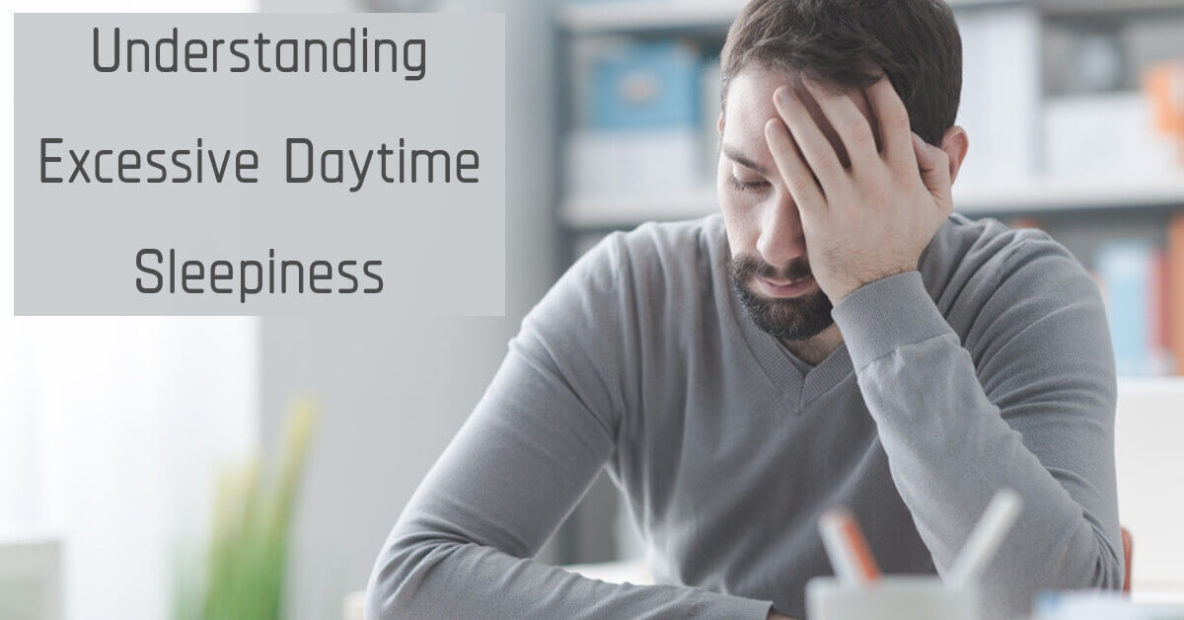Understanding Excessive Daytime Sleepiness

- A Promising Paradigm Shift: New Research Challenges the CPAP-First Approach to OSA Treatment - September 5, 2023
- Understanding Sleep Meditation Techniques - July 30, 2021
- How Online Learning Has Affected Sleep for Students - July 13, 2021
One of the most common reports to sleep specialists is the experience of “fatigue,” yet, upon further diagnosis, it is revealed that some of these reports more accurately depict excessive daytime sleepiness, or hypersomnia. This condition is not only an isolated experience but also a syndrome experienced by many adults and stemming from a wide array of underlying causes, including Alzheimer's disease, Parkinson's disease, epilepsy, and chronic pain syndromes among many others. Excessive Daytime Sleepiness, or EDT, is defined by the experience of sleepiness on a regular basis that interferes with your ability to complete the activities of daily life, including work. A 2001 report by a Christian Guilleminault and Stephen N. Brooks identified that a quite sizable proportion of adults (43%) report that sleepiness interferes with their daily activities a few days per month or more and one out of five (20%) experience this level of daytime sleepiness at least a few days per week or more. With such a high rate of occurrence, it is important to understand some of the conditions of EDT, the wide range of causes, and possible cures.
Conditions
Although fatigue and “tiredness” are common reports to sleep specialists, they point more directly to a lack of energy, absence of motivation, and reticence to take part in activities that require mental or physical exertion. EDT is somewhat different from these other symptoms, which may be related to a wider range of conditions. Specifically, EDT is the experience that sleep is loudly knocking at the door during the daytime hours. Some sufferers of EDT report that they can fall asleep in almost any circumstance or that they find themselves nodding off at inopportune moments. Even if they do not fall asleep during daily activities, they may find that the desire to sleep gets in the way of activities, such as work, requiring them to stand up, walk around, drink caffeinated beverages, or perform other tricks to stay awake.
Causes
The most common cause of EDT is, unsurprisingly, a lack of sleep. This sleep may be simply insufficient in terms of the hours per night, or it may be fragmented. Sleep-related breathing disorders commonly lead to fragmented sleep, which prevents the sleeper from being able to reach deeper levels of sleep, such as Rapid Eye Movement, or REM, sleep. By waking up frequently to adjust breathing, the mind does not have time to relax to a state of deep sleep required for rest. Aside from these insufficiencies of sleep, other forms of insomnia may lead to EDT. However, a lack of restful sleep is not the only cause of EDT. Other alertness disorders such as narcolepsy, idiopathic CNS hypersomnia, or Kleine–Levin syndrome may contribute. Beyond these neurological disorders, a wide range of nervous system, psychological or psychiatric, or intoxicant-related causes may be underlying the experience of EDT. Some of these causes may be quite serious, and it is important to seek medical attention from a sleep specialist or general practitioner when sleepiness gets in the way of the activities of everyday life.
Cures
Although EDT may be caused by a wide array of sleep, neurological, psychological, and other underlying conditions, the range of treatments have expanded along with medical innovation and technology. Medication is among the most common treatment, including Dextroamphetamine, Methamphetamine, Methylphenidate, Pemoline, Modafinil, and gamma-hydroxybutyrate. Each of these medications comes along with a particular profile of side effects, and your doctor can help you identify the right treatment for your particular needs. Of course, the proper line of treatment depends on the cause of EDT, so other non-medication options may be available. For instance, sufferers of sleep apnea may be able to use continuous positive airway pressure, or CPAP, as a remedy. Those with narcolepsy may require sodium oxybate, while those whose EDT stems from depression may find relief through fluoxetine, citalopram, paroxetine, or sertraline.
Whatever the cause of EDT, treatments are available to find relief. The first step is to contact us at Sound Sleep Medical to meet with a sleep specialist and to accurately describe your symptoms. If you find yourself falling asleep in inappropriate settings or feeling so sleepy that you cannot complete the activities of daily life, you may be suffering from EDT. Talk to your sleep specialist at Sound Sleep Medical about these symptoms, and you will begin on the road to alertness all day long.
Reference
Guilleminault, Christian and Stephen N. Brooks. 2001. “Excessive Daytime Sleepiness: A Challenge for the Practising Neurologist.” Brain 124(8): 1482–1491.
